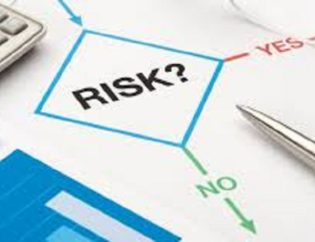
After the tremendous effort that a Freelancer or Company makes to get clients and, finally, an Invoice, it is even more important to charge for these services and products offered.
Making an invoice in good condition and with the ideal characteristics will allow you to expedite the collection process of the invoice you issue. Or rather, if you do not make the Invoice attached with the necessary details and information, you provide your Client with the possibility of not being paid, or it may be extended over time.
For this reason, we want to transfer the nine elements that must be included in an Invoice so that it is a perfectly legal document allowing you to speed up the collection process in your business.
1. Tax Information of Your Business (Self-Employed or Company)
The first point, and mandatory on an invoice. You must indicate the contact information of your business. If you are Self-Employed, your name and surname, and if you are a company, the company name. In addition, you must indicate the full address.
2. The Logo of Your Company or Business
Although it is not mandatory, it is highly recommended to introduce the commercial logo of your business on the Invoice. Adding it allows you to transmit a more professional image to your clients. In addition, it generates a significant and quick visual impact, easily relating the Invoice to the supplier for the customer. If you are Self-Employed, you can use a trademark to differentiate it from your tax identification.
3. Information Related to the Invoice
Although it may seem obvious, it is mandatory to indicate the word “Invoice” within the document. I would add or not it causes legal differences in the paper. You must also indicate, in a mandatory manner, the number assigned to the Invoice. We remind you that the numbering must be correlative. i.e., 0001, 0002, 0003, 0004
However, there is no need to start the numbering from 0. That is, a newly created company could start its total from 00050, 00051, 00052, etc… Normally, this technique is used to avoid indicating to your Customers who are the first invoices you make.
Finally, you must also indicate the date of issue of the Invoice.
4. Information Relating to the Client
As in the case of the Invoice issuer, the document must also include all the Client’s fiscal data. Name or business name, company address and tax identification number. There must be no errors in this information. The corresponding VAT cannot be deducted if a Customer has an invoice without this information.
5. Description of the Products & Services Offered
You must indicate the description and quantity of the products and services you have provided to your clients. This quickly means what these products or services consist of. In addition, for each line of product or service on the Invoice, you must indicate the price per unit without taxes applied.
6. Total amounts of the Invoice
Added all the products or services in the Invoice; you must indicate the total amount without VAT. The tax rate (VAT) applied in a second line must appear on the Invoice. Remember that depending on your business and the products or services offered, VAT can be 4%, 10% or 21%. In addition, you must also indicate the amount of VAT.
Finally, the total amount must appear on the Invoice. What will be the Taxable Base + VAT applied?
7. Observations
Although it is not mandatory to indicate it in an Invoice, if it is exciting, put in writing those concepts that must be clear to both parties. For this, it is always advisable to have a section “Observations” within the invoice document. Remember that the document’s validity generates obligations for both parties, so it is interesting that any agreement you have with your Client is reflected in the paper.
8. Charge Method
One of the most critical elements within an Invoice. As we have mentioned, collecting the Invoice sometimes becomes a delicate process. And that is why reflecting the collection conditions on the Invoice and that your Client accepts these will allow and help you not to find yourself in possible situations of delinquency. It is highly recommended to indicate the payment method: Cash, Transfer, Direct Debit, etc. In addition, you must indicate the expiration date: On the invoice date, 30 days or 60 days. We remind you that the maximum expiration date, by law, on an invoice is 60 days!
9. Contact Information
To finalize the Invoice, it is highly recommended to indicate that contact information, which allows your Client to contact you quickly. So it is interesting, at the bottom of the page, to remember your company’s name and indicate an email and contact telephone number.
In conclusion, what you should try when making an invoice is to make it understandable and clear to your Client. That there are no doubts and confusions that can benefit your Client and allow the payment period to be extended in addition to facilitating contact between the two parties.
Finally, to finish getting a perfect invoice, you must consider the invoice’s design. You don’t have to be a graphic designer or want to put many colours on the Invoice. You must only convey professionalism, organization and clarity in the document.
Luckily, online tools such as Acute Invoice allow invoices to be made in a clear, simple and visual way. A billing program facilitates the process, execution and management of the issuance of invoices.









